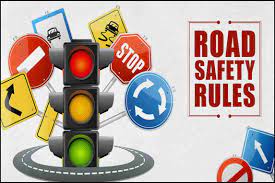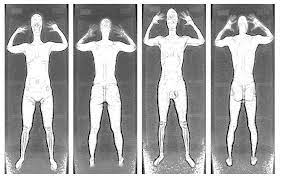Road Safety Rules: Ensuring a Safer Journey for Everyone
Road safety is a crucial aspect of our daily lives, as it not only protects us but also ensures the well-being of others on the road. Adhering to road safety rules is essential for preventing accidents and creating a safer environment for all commuters. Let’s take a closer look at some fundamental road safety rules that we should always keep in mind.
Follow Traffic Signals and Signs:
Obeying traffic signals and signs is paramount for maintaining order on the roads. Red means stop, green means go, and yellow signals caution. These signals are designed to regulate traffic flow and reduce the risk of collisions. Always pay attention to these signs and follow them diligently.
Wear Seat Belts:
Seat belts are one of the most effective safety features in vehicles, yet many people neglect to use them properly. Always ensure that you and your passengers wear seat belts before starting your journey, regardless of how short or long it may be. Seat belts significantly reduce the risk of injury in case of an accident.
Respect Speed Limits:
Speeding is a major cause of accidents on roads worldwide. It not only endangers your life but also poses a threat to others sharing the road with you. Adhere to speed limits set by authorities based on road conditions, visibility, and traffic density. Driving within the prescribed speed limit allows you enough time to react to unexpected situations.
Avoid Distractions:
Distracted driving has become a growing concern due to the increased use of mobile phones while driving. Texting, talking on the phone, or even adjusting music can divert your attention from the road and increase the risk of accidents significantly. Ensure that your focus remains solely on driving and keep distractions at bay.
Use Turn Signals:
Indicators or turn signals are essential communication tools while driving. Signaling your intentions by using turn signals allows other drivers to anticipate your moves and react accordingly. This simple act promotes smoother traffic flow and reduces the chances of collisions.
Maintain Safe Distances:
Maintaining a safe distance between your vehicle and the one in front of you is crucial. It provides you with enough time to react and brake if necessary, especially during sudden stops or emergencies. The recommended safe distance is at least three seconds behind the vehicle in front of you.
Be Cautious at Intersections:
Intersections can be particularly dangerous areas due to vehicles crossing paths from different directions. Always approach intersections with caution, slow down, and check for any approaching vehicles before proceeding. Observe traffic signals and yield the right of way when required.
Never Drink and Drive:
Driving under the influence of alcohol or drugs is not only illegal but also extremely dangerous. It impairs your judgment, reflexes, and coordination, increasing the risk of accidents significantly. If you plan on consuming alcohol, always designate a sober driver or use alternative means of transportation.
Watch out for Pedestrians:
Pedestrians have the right to use roads safely as well. Always be vigilant for pedestrians crossing the road, especially near schools, residential areas, or busy intersections. Slow down when approaching pedestrian crossings and give them ample time to cross safely.
Regular Vehicle Maintenance:
Ensuring that your vehicle is in good condition is essential for road safety. Regularly check brakes, tires, headlights, indicators, and other vital components to ensure they are functioning properly. Proper maintenance not only reduces breakdowns but also prevents accidents caused by mechanical failures.
Remember, road safety is a collective responsibility that we all share as road users. By following these rules diligently and being considerate towards others on the road, we can create a safer environment for everyone’s benefit. Let’s prioritize road safety today for a better tomorrow!
5 Essential Road Safety Rules to Follow
- Always wear a seat belt and ensure that all passengers are wearing theirs too.
- Obey the speed limit and never drive above it.
- Be aware of your surroundings, including pedestrians, cyclists, and other vehicles on the road.
- Avoid distractions such as talking on the phone or eating while driving.
- Make sure your vehicle is in proper working condition before getting on the road (check tires, brakes, lights etc.).
Always wear a seat belt and ensure that all passengers are wearing theirs too.
Wearing Seat Belts: A Simple Step Towards Safer Journeys
When it comes to road safety, one of the simplest yet most effective measures we can take is to always wear our seat belts. This small action can make a significant difference in protecting ourselves and our passengers in the event of an accident. Seat belts are designed to restrain and secure occupants inside the vehicle, minimizing the risk of serious injuries or even fatalities.
Whether you’re driving alone or with others, it is essential to buckle up before starting your journey. Ensure that all passengers in your vehicle also wear their seat belts, regardless of their age or seating position. Remember, even a short trip can turn unpredictable, and accidents can occur at any time.
Seat belts work by distributing the force of impact across the strongest parts of our bodies, such as the chest and pelvis, reducing the chances of severe injuries. They prevent occupants from being thrown forward or ejected from the vehicle during a collision. It’s worth noting that airbags alone cannot provide adequate protection without wearing seat belts.
Parents and guardians have a crucial role in setting an example for children by consistently wearing seat belts themselves and ensuring that young passengers are properly restrained in car seats or booster seats as per their age and weight recommendations.
Moreover, it’s important to understand that seat belts are not just for highways or long drives; they should be worn even on city streets or short commutes. Accidents can happen anywhere, so it’s better to be safe than sorry.
In some countries, not wearing seat belts is not only dangerous but also against the law. Violating seat belt laws may result in fines or penalties. However, beyond legal obligations, let’s remember that wearing seat belts is about personal safety and protecting those we care about.
So let’s make it a habit – before starting any journey, take a moment to ensure everyone is buckled up securely. Let’s prioritize our safety and the safety of our passengers by embracing this simple yet life-saving practice. By wearing seat belts, we can significantly reduce the risk of injuries and increase the chances of a safer journey for all.
Obey the speed limit and never drive above it.
Obey the Speed Limit: A Vital Rule for Road Safety
One of the most crucial road safety rules is to obey the speed limit and never drive above it. Speeding is a significant factor in road accidents and can have severe consequences for both drivers and pedestrians. Adhering to the prescribed speed limit is essential for maintaining control over your vehicle and ensuring the safety of everyone on the road.
Speed limits are not arbitrarily set; they are determined based on various factors such as road conditions, visibility, traffic density, and nearby surroundings. They are designed to create a safe environment for all road users. By driving within the speed limit, you give yourself enough time to react to unexpected situations and avoid potential accidents.
Exceeding the speed limit not only puts your life at risk but also endangers others around you. It reduces your ability to maneuver safely, increases stopping distances, and makes it harder to control your vehicle effectively. The higher the speed, the greater the impact in case of a collision, resulting in more severe injuries or fatalities.
Additionally, driving above the speed limit reduces your ability to respond promptly to changes in traffic flow or any hazards that may arise suddenly. It hampers your judgment and reaction time, making it difficult to make split-second decisions that could prevent accidents.
By obeying the speed limit, you contribute to creating a safer road environment for everyone. You show respect for other drivers, pedestrians, cyclists, and other vulnerable road users who share the same space with you. Your responsible behavior sets an example for others and helps reduce overall traffic congestion and incidents.
Remember that road safety is not just about reaching your destination quickly but arriving there safely. Always be mindful of posted speed limits and adjust your driving accordingly. Plan your journey in advance so that you have sufficient time to reach your destination without rushing or feeling compelled to exceed speed limits.
Let’s prioritize road safety by obeying speed limits diligently. By doing so, we can protect ourselves and others on the road, prevent accidents, and ensure a safer and more enjoyable journey for everyone. Together, let’s make responsible driving a habit and create a culture of road safety that benefits us all.
Be aware of your surroundings, including pedestrians, cyclists, and other vehicles on the road.
Be Aware of Your Surroundings: Ensuring Road Safety for All
When it comes to road safety, being aware of your surroundings is a fundamental rule that every driver should follow. By staying alert and vigilant, you not only protect yourself but also ensure the safety of pedestrians, cyclists, and other vehicles on the road. Let’s delve deeper into why this tip is crucial for maintaining road safety.
One of the primary reasons to be aware of your surroundings is to anticipate and respond to potential hazards. By constantly scanning the road ahead, checking mirrors, and being mindful of blind spots, you can spot pedestrians crossing the road, cyclists approaching from the side, or other vehicles changing lanes. This awareness allows you to adjust your driving accordingly and take necessary precautions to avoid accidents.
Pedestrians play a vital role in our road ecosystem. They have the right to use roads safely, whether they are crossing at designated crosswalks or walking along the sidewalk. Being aware of their presence helps you anticipate their movements and give them enough time and space to cross safely. Always yield to pedestrians at crosswalks and be cautious when driving near schools or residential areas where children may be present.
Cyclists are another vulnerable group on the road who deserve our attention and respect. They share the same space as motor vehicles but are more susceptible to injuries in case of an accident. Being aware of cyclists allows you to maintain a safe distance when overtaking them, give them ample space while turning, and avoid opening car doors without checking for approaching cyclists.
Additionally, being aware of other vehicles around you is crucial for maintaining smooth traffic flow and preventing collisions. Keep an eye out for indicators or turn signals from neighboring vehicles as they indicate their intentions. This awareness helps you anticipate lane changes or turns by other drivers, allowing you to adjust your speed or position accordingly.
To enhance your awareness on the road:
- Minimize distractions: Avoid using mobile phones, eating, or engaging in any activity that diverts your attention from driving. Stay focused on the road.
- Use mirrors effectively: Regularly check your rearview and side mirrors to monitor the movement of vehicles behind and beside you.
- Eliminate blind spots: Adjust your side mirrors to minimize blind spots and ensure maximum visibility of adjacent lanes.
- Stay updated on traffic conditions: Pay attention to traffic updates, road signs, and signals to anticipate any changes or potential hazards ahead.
Remember, being aware of your surroundings is not just about your safety; it is a responsibility towards others sharing the road with you. By staying alert, you contribute to a safer road environment for everyone. Let’s prioritize road safety by being vigilant and considerate towards pedestrians, cyclists, and fellow drivers. Together, we can make our roads safer for all.
Avoid distractions such as talking on the phone or eating while driving.
Avoid Distractions: Focus on the Road for a Safer Journey
In today’s fast-paced world, it is common to find ourselves multitasking even while driving. However, engaging in distractions such as talking on the phone or eating can have serious consequences on road safety. It is crucial to prioritize our attention and focus solely on driving to ensure a safer journey for ourselves and others.
Talking on the phone while driving has become a prevalent distraction. Whether it’s a call or texting, using mobile devices diverts our attention from the road ahead. Even a momentary lapse in concentration can lead to accidents that could have been easily avoided. To prevent this, it is advisable to keep your phone on silent mode or use hands-free devices if you must take calls while driving. However, it is always best to pull over in a safe location if you need to engage in lengthy conversations.
Another common distraction is eating or drinking while behind the wheel. While it may seem harmless, trying to juggle food or beverages while maneuvering through traffic can be risky. Taking your hands off the steering wheel and diverting your attention towards food increases the chances of losing control of your vehicle and decreases your reaction time in case of unexpected situations.
By avoiding these distractions, we can maintain focus on the road and react promptly to any potential hazards that may arise. It allows us to anticipate and respond effectively, reducing the risk of accidents significantly.
To ensure road safety and minimize distractions:
- Plan ahead: Finish any important tasks or meals before getting behind the wheel, so you’re not tempted to multitask while driving.
- Use designated rest stops: If you need to eat or drink during a long journey, make use of designated rest areas where you can safely park and enjoy your meal without compromising your concentration.
- Keep conversations short: If you need to make or take an urgent call, keep it brief and avoid engaging in lengthy conversations that can distract you from the road.
- Assign a co-pilot: If you’re traveling with someone, ask them to handle tasks like answering calls or managing navigation so that you can focus solely on driving.
Remember, road safety is everyone’s responsibility. By avoiding distractions such as talking on the phone or eating while driving, we contribute to a safer environment for ourselves and others on the road. Let’s prioritize our attention and make conscious efforts to stay focused while driving, ensuring a smoother and safer journey for all.
Make sure your vehicle is in proper working condition before getting on the road (check tires, brakes, lights etc.).
Ensuring Vehicle Safety: A Crucial Step for Road Safety
Before embarking on any journey, it is essential to prioritize the safety of both yourself and others on the road. One crucial aspect of road safety is ensuring that your vehicle is in proper working condition. Conducting a thorough check of your vehicle’s tires, brakes, lights, and other vital components can significantly reduce the risk of accidents. Let’s delve into why this tip is so important.
Tires:
Your vehicle’s tires are its only point of contact with the road. It is crucial to regularly inspect them for proper tread depth and inflation. Worn-out or underinflated tires can compromise your vehicle’s grip on the road, leading to reduced control and longer braking distances. Checking tire pressure and tread regularly ensures optimal performance and enhances overall safety.
Brakes:
The braking system is a critical component when it comes to road safety. Faulty brakes can significantly increase stopping distances, making it difficult to avoid collisions or sudden obstacles. Regularly checking brake pads, discs, and fluid levels helps ensure that your brakes are in good working condition, providing you with reliable stopping power when needed.
Lights:
Properly functioning lights are essential for visibility on the road, both during the day and at night. Inspect headlights, taillights, brake lights, turn signals, and hazard lights to ensure they are all working correctly. Properly functioning lights not only help you see clearly but also allow other drivers to see your intentions on the road.
Fluid Levels:
Various fluids play crucial roles in keeping your vehicle running smoothly. Regularly check engine oil levels, coolant levels, brake fluid levels, and windshield washer fluid levels. Adequate fluid levels ensure optimal performance of different systems within your vehicle and prevent potential breakdowns or malfunctions while driving.
Other Components:
While the above-mentioned areas are critical, it is also important to inspect other components of your vehicle. Check the windshield wipers to ensure they effectively clear your windshield during rain or snow. Test the horn to ensure it is audible and functioning properly. Additionally, check the mirrors and adjust them for optimal visibility.
By taking a few moments to conduct these checks before hitting the road, you significantly reduce the chances of experiencing mechanical failures that could lead to accidents. Prioritizing vehicle safety not only protects you and your passengers but also contributes to safer roads for everyone.
Remember, regular maintenance and inspections are key. If you notice any issues during your checks or suspect a problem with your vehicle, consult a qualified mechanic for further examination and necessary repairs. By making sure your vehicle is in proper working condition, you are actively promoting road safety and playing your part in creating a secure environment for all road users.



